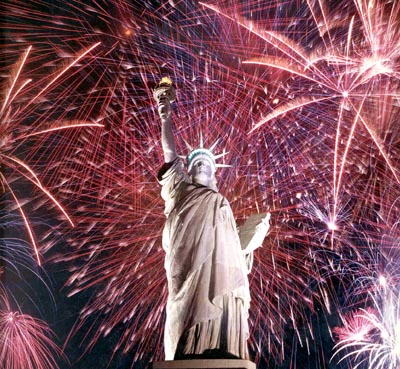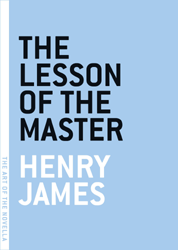J.M.W. Turner (Metropolitan Museum, up through Sept. 21). The Met’s 140-piece Turner retrospective, the first full-scale look at Turner’s work ever to be mounted in America, is a once-in-a-lifetime occasion, a priceless opportunity to track the evolution of the nineteenth-century English painter whose late canvases (generously represented in this show) march right up to the very brink of abstraction. Like most blockbuster shows, this one is far too much of a muchness, but if you can stand in front of a painting like this without being thrilled to the marrow, you’re looking in the wrong direction (TT).
Archives for July 4, 2008
TT: Not at work
 I came roaring back to New York Monday afternoon and promptly fired off an e-mail to my editor at The Wall Street Journal telling her what actors I’d be mentioning in today’s review of the Hudson Valley Shakespeare Festival. Seconds later she fired back an admirably terse reply that read as follows: “Look at your calendar.”
I came roaring back to New York Monday afternoon and promptly fired off an e-mail to my editor at The Wall Street Journal telling her what actors I’d be mentioning in today’s review of the Hudson Valley Shakespeare Festival. Seconds later she fired back an admirably terse reply that read as follows: “Look at your calendar.”
Duh.
Since there’s no Wall Street Journal today, I’ll be reviewing the Hudson Valley Shakespeare Festival in next Friday’s Journal. And instead of staying in town to see a show, I’m going to have lunch with a colleague, then going straight from the restaurant to Penn Station, where I’ll catch a train for Connecticut and Mrs. T. We’ll be hitting the road next Wednesday for parts north, about which more in due course. In the meantime, I’m soooo out of here.
Happy Fourth of July!
TT: Artistic elephantiasis
 Why is American art so big? The answer, of course, is that some of it isn’t, a fact of which I was recently reminded by Melville House’s nifty little Art of the Novella paperback series, whose fourteen well-chosen titles include Henry James’ The Lesson of the Master, Herman Melville’s Bartleby the Scrivener, and Edith Wharton’s The Touchstone, miniature masterpieces all. Even in America, small can be beautiful.
Why is American art so big? The answer, of course, is that some of it isn’t, a fact of which I was recently reminded by Melville House’s nifty little Art of the Novella paperback series, whose fourteen well-chosen titles include Henry James’ The Lesson of the Master, Herman Melville’s Bartleby the Scrivener, and Edith Wharton’s The Touchstone, miniature masterpieces all. Even in America, small can be beautiful.
Be that as it may, we do seem to have a thing for Great Big Art in this country, and while some of our jumbo art is memorable, even extraordinary, much of it would profit from being put on a diet. I liked Tracy Letts’ August: Osage County a lot, but I seem to have been the only drama critic in New York to have suggested that this three-and-a-half-hour monster is too long for its own good:
There’s a catch, and it’s a huge one: The hour-long first act is a pretentious piece of superfluous exposition that could and should have been cut. I suppose I ought not to suggest that you come late (nudge, nudge), but if you do choose to see the whole thing, take my word that it gets better–a whole lot better–after the first intermission.
All this, needless to say, is the subject of my “Sightings” column in Saturday’s Wall Street Journal, in which I speculate on the causes of the giantism with which so much of our art is afflicted. Pick up a copy of tomorrow’s paper and read all about it.
UPDATE: Read the whole thing here.
TT: Almanac
“New order of the ages” did we say?
If it looks none too orderly today,
‘Tis a confusion it was ours to start
So in it have to take courageous part.
No one of honest feeling would approve
A ruler who pretended not to love
A turbulence he had the better of.
Robert Frost, “For John F. Kennedy His Inauguration”
